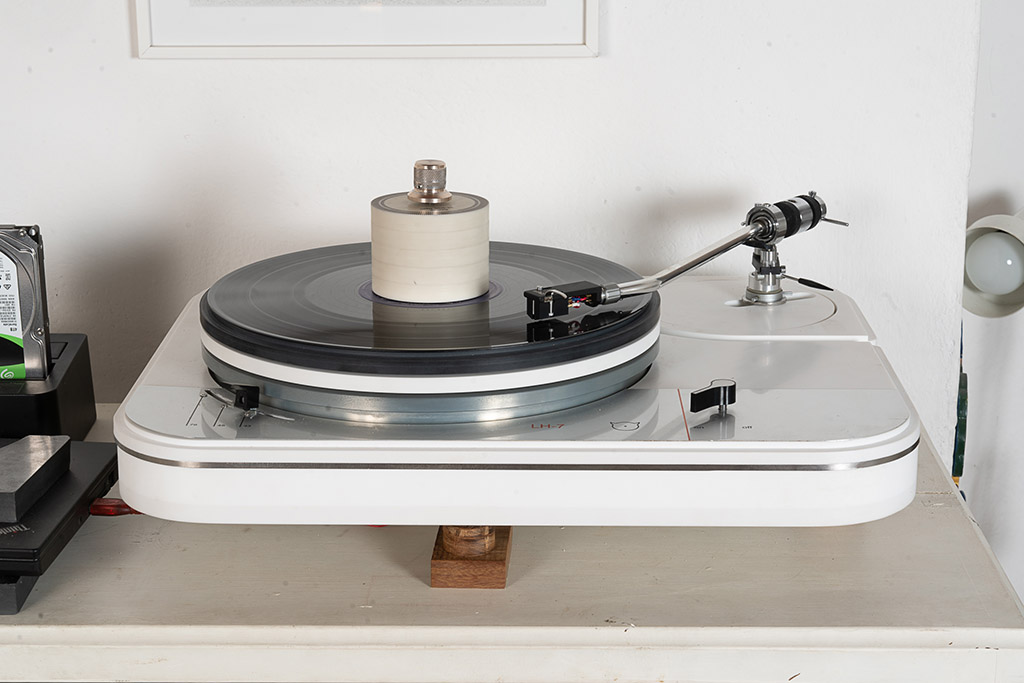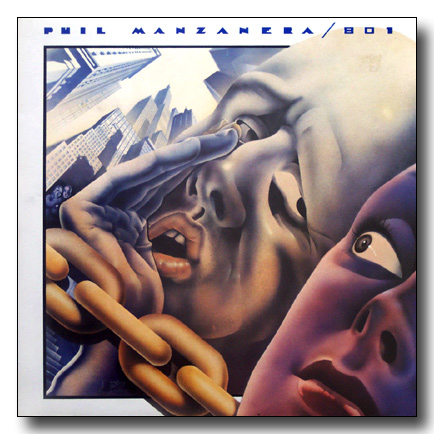
The History:
1721 Garrard and Company appointed Crown Jewellers of London. One of their duties being the care and maintenance of the British Crown Jewels and the Royal Crown. They had an international reputation for craftsmanship in the design and manufacture of jewellery, gold and silverware. In 1952 they amalgamated with the Goldsmiths and Silversmiths Company of Regent Street, London.
1914 Garrard and Company were asked to manufacture precision range finders for the British Artillery because they had both the craftsmen and special machinery needed.
1915 They formed "The Garrard Engineering and Manufacturing Company Ltd" with Major S.H.Garrard as Chairman, and Mr C.E.Newbegin as Managing Director, to run a factory set up in the premises the White Heather Laundry in Willesden, London.
1918 At the end of the war, the workers returned to their previous jobs, and Garrard decided to continue to operate the company and they looked for consumer products to manufacture. They hired a young engineer, Mr. H.V.Slade, who became General Manager, who started the production of small lathes and boring tools. He had also seen a need for quality spring wound motors for the fast developing gramophone manufacturing industry. The first model, The Garrard Number 1 Spring Wound Gramophone Motor was produced and sales quickly followed.
1919 The White Heather Laundry had requested its premises back, and so the company looked for a new location. They moved to Swindon where there were plenty of skilled engineering apprentices from the Great Western Railway Company, the largest employer in the town.
1920 The development of the spring wound motor continued and as a result of its quality, silent running and price, it was used by the major gramophone companies, Columbia, Decca and His Masters Voice, and others such as Lugton, Selecta, Coppock, Itonia and Thompson, and Diamond and Butcher. The company had a policy that one model of every range should be the best obtainable. The "Super" Gramophone motor was the first of these prestige products - probably the best spring motor ever produced.
1920 - 1928 Other products produced at this time included motors for construction kits (Primus), a cine-camera/projector (Campro), and a device for playing records at a constant linear speed which almost doubled the playing time (The World Record Controller).
1926 Garrard became a public company to finance the expansion needed to meet the demand for spring motors.
1928 Development started on electrical motors for gramophones, which resulted in a belt drive motor called the Model E. Because there were few electrical supply standards at that time, it could be used with AC and DC, 25 to 100 Hz, and 50 to 250 Volts. Improvements led to the Model ED. As AC current became more common, the Models AC4 and AC6, the most popular electric gramophone motors of the time, were developed.
1930 The motor development programme led to the first Garrard gramophone. Previously it had only produced motors for its customers. They decided to make a super quality alternating current gramophone motor as a prestige model, just as they had done with the Super spring motor. This direct drive motor became known as the Garrard Model 201. It was taken up by the BBC and other broadcasters, cinemas, and it became very popular with HiFi enthusiasts. It was originally just for 78rpm records, but was later modified to play the 331/3rpm, 16 inch records used in cinemas. It was the first of what were later to be called transcription turntables.
1931 A subsidiary company, Garrard Clock Ltd was set up to manufacture and sell clocks using spring motors produced by the parent company.
1932 The first Garrard record changer, the RC1, was developed for shellac 78 rpm records by Mr E.W.Mortimer. These used AC current, but the RC2 series could use AC and DC. Subsequently a new dropping technique was obtained and the RC3 and the very popular RC4 was developed. About 4,500 were produced during the next 5 years. The development of radio tuners and amplifiers meant that electronic pickups could replace the old acoustic horn systems. This led to a big increase in the sales of radiograms, and record players. Garrard produced some arms and pickups for its turntables.
1938 The RC100 record changer, which could play both sides of each record, and also mixtures of 10 and 12 inch records, was produced for sale in the USA
1939 - 1945 Production ceased and large numbers of clock based mechanisms were made for mines, and other military equipment.
1945 Following the death of Major S.H.Garrard, all the links with Garrard and Company the Crown Jewellers were severed and The Garrard Engineering and Manufacturing Company Ltd. became a separate entity with Mr H.V.Slade as managing Director. Competition was fierce and a new record changer had to be rapidly developed - the Model TC30 (1946). It and similar models were produced around the clock as demand escalated. It was the last model to play only 78rpm records.
1948 The Model RC70 record changer was introduced to play the new 10 and 12 inch, 331/3rpm and 7 inch 45rpm vinyl records, as well as the older 78rpm records. It was the forerunner of the RC80 in 1950, which sold for many years. Large numbers were sold in the USA. New lightweight pickups and arms were developed for these records, and the RC80 was the first with a magnetic cartridge.
1954 Garrard 301 turntable launched for the serious HiFi market. It has become one of the icons of design and performance. When fully restored mechanically they are again in great demand. They had grease bearings which were later changed to oil bearings. The enamel colour was changed from grey to white. Clock making was stopped due to cut price competition.
1957 Garrard released one of the first stereo pickups, the Model GCS10, when stereophonic records were introduced. The Model 4HF was in production until 1965, by which time about 100,000 units had been produced. The TPA 12 inch transcriptions pickup arm was launched in 1958 for use transcription units for playing stereo and mono recordings. It had height and stylus pressure adjustment, and a plug-in pick-up head.
1958 A serious factory fire occurred, but production was restored with help from a local company, the Plessey Company Ltd., which loaned factory space. A further small factory in Blunsdon was acquired to produce component parts.
1959 The new Autoslim series was launched with help from Plessey. The SP25 was probably the most popular model Garrard ever produced.
1960 Garrard became part of the Plessey Group of Companies with the name Garrard Engineering Ltd., and another factory was acquired in Swindon. There was also a factory in Wigan which exported to the USA via Liverpool. Mr. H.V.Slade died a year later and in 1962 Garrard, as part of the Plessey Components Group, came under the direction of Mr T.H.Pritchard.
1959 Garrard developed a novel Magazine Tape Deck, but it failed as it was more cumbersome than the Phillips Compact Cassette launched in 1963.
1964 The Model Lab 80 was launched as the first record changer which had the performance of a transcription turntable. It had many unique adjustment features including a wooden arm.
1965 The Garrard 401 was launched to replace the 301. It was produced until 1977 when over 50,000 units had been sold, and it is still treasured by enthusiasts around the world. The Model SP25 was launched with the Mark I version. It was so popular it continued for many years up to the Mark IV version. A disco version, the Disco 80 was also produced.
1971 The Zero 100 automatic transcription table was introduced with its revolutionary tangential tracking arm. Garrard received a series of awards for its development - The Queens Award, The Italian Mercurio d'Oro Award, and the USA's Emile berliner Award.
1975 - 1976 Garrard's first direct drive player, the DD75 began production. The GT 20/25 and 35 were introduced and they stayed in production with design changes until 1979.
1978 The DD range of products, DD1 30, DD1 31, and DD1 32 were introduced in the autumn using the garrard designed and produced direct drive motor. Improved versions of the GT seies were introduced - the GT 250 and 350.
1979 Garrard sold to Gradiente Electronica of Brazil.
1992 The small development team led by the Managing director, which had remained at Swindon, was partly closed down.
1992 Terry O'Sullivan had been involved with turntables since he got his first Bush Record Player in 1958. After lusting after a 301 in the 60's, he started building plinths in 1979 and bought his first 401 from the factory in nearby Swindon. He began to collect and restore 301s and 401s and in 1990 he set up Loricraft Audio, encouraged by his friends Julian and Nigel, who owned the HiFi shop in Oxford, "Westwood and Mason". Terry visited the Garrard development team at Swindon up till 1995, when it was finally closed down completely, and he still remains in contact with some of the owners and employees.
1997 Following the closure, Terry opened discussions with Gradiente and in 1997 he obtained the licence to use the Garrard brand name. Gradiente had always wanted development to continue and the later that year the award winning Garrard 501 was launched at the London Audio Show.
200... The small team of Terry, Nigel (yes, the innovative electronic engineer from the Oxford HiFi shop) and Martina (who has worked with Thorens and Ortophon) can be seen at the London, Frankfurt and Las Vegas HiFi shows, where their turntables are in great demand to drive high end amplification systems, and satisfied owners take their chance to talk about the history and engineering of these renowned turntables.


.jpg)


























.jpg)







































No comments:
Post a Comment